Chapter Title
Hello! I am currently ranked top 30 Dotabuff Storms, and here are my thoughts
regarding the 7.20 Storm. I'd recommend watching the video guide on my channel,
but just in case, I'm including the text version too.
Storm Spirit: The Definitive Guide
So let's start off by recapping the changes that happened with the 7.20 patch.
With the mana formula rework, Storm has weaker than usual mid-game. This is however, offset by
his two main items - Bloodstone and Orchid, and also Euls, providing more regen than before.
Kaya has also received two upgrade paths, which can boost Storm's weaknesses depending on the match.
Treads got increased stats, but its attack speed component has moved onto the Phase Boots.
Dnd finally, Storm itself got direct buffs to the Intelligence gain, Remnant damage,
Vortex duration+cooldown, and Overload attack slow.
Overall, Storm is about the same early game, became slightly weaker
during the mid-game, and slightly stronger during the late game.
PICKING
To have a good Storm match, not only do the enemy picks matter, but our own team composition too.
And currently Storm is best paired with a carry hero that can fight early with minimal farm,
such as Phantom Assasing, Juggernaut, Slark, etc.
To understand why, we must understand that Storm works in powerspikes. Early game Storm, with two nulls,
treads, at the end of the laning phase, can solo-kill most heroes with simillar items.
However, as Storm enters mid-game, and so do the enemy heroes, they will, first of all, start grouping up,
which already diminished Storm's pickoff potential, and they will also start aquiring items that either
boost their survivability or straight up allow to disengage or manfight Storm. And that's where Storm is at
his weakest, and needs a strong position one, to rally the game from that point onward.
And once Storm aquires his first big item, that's the second powerspike, as he greatly increases his
survivability, maneuverability, and pickoff potential.
And as always, remember to be careful picking Storm into enemy heroes such as Anti-Mage, Meepo, Huskar,
Skymage, Grim, and other heroes you feel you do poor against.
LANING
With the changes to the Nulls, and Storms intelligence gain, Storm is now very flexible regarding
his starting items. Lets see some options:
If the opposing mid hero, such as Sky, Huskar, plans to unload heavy harassment from minute 1, prioritising health
and regen will help Storm stay in lane longer.
If the harassment is fairly moderate and linear, such as Lina, Queen of Pain,
salve can be skipped, and stat items can be more varied.
And if the enemy mid is weak at earlier levels, such as Shadow Friend, Meepo, Storm can keep
himself some extra gold for a faster bottle, play more aggresive, and send out regen later.
Now, laning itself is a very complex topic with many variables, and it is impossible to cram everything
into a single video, so we'll just go over the general checklists and thought processes.
If the creep position can be improved, always pull.
If we need to leave the lane for a bit, always push.
If there is no vision, aquire it.
If regen is running low, get more.
If the enemy is the kind of hero that easily snowballs, making sure he doesn't freefarm is the priority.
Otherwise, maximising our own farm is the way to go.
Vortex has been buffed and can be used offensively on heroes that hang out in melee range,
or to help secure the kill at level 6.
Remnant is prioritised if we plan to spend good amount of time in the jungle, and,
overload is prioritised if we plan to be doing pickoffs from level 6.
ITEMS
This, again, will be unique to every matchup, but we can outline some general ideas:
We will always want two Nulls for slot efficiency, and Treads, while lacking the attack speed,
provide superior stats to the Phase Boots. Lets not forget to always have TP scroll or two in the inventory,
and most importantly, use Clarities whenever there's a walking or farming time involved.
Afterwards, if the enemy has many disables that prevent Storm from functioning, going Euls into BKB
will help Storm remain releveant thoughout the mid-game, and catch up after getting Bloodstone or Orchid next.
If not facing immidiate danger from disables in the midgame, laning phase went well, Storm can opt for
Kaya-Orchid route, provided that enemies won't counter that anytime soon. Missing attack speed will be
covered by Orchid, so that's a plus too.
Overall most universal build includes classic Kaya into Bloodstone. While lacking in offense, due to
reduced attack speed, increased maneuverability trough regen and mana reduction makes up for it. Upgrading
Kaya with Yasha, or going Orchid next, solves the attack speed issue.
And lastly, my favourite, althought quite niche option, the Midas Storm. The short version is, in order
for this item build to work, Storm's laning should go well enough to get the Midas anywhere from 10 to 15
minute mark, just as the laning phase is ending. In addition to that, the enemy mid must not be snowballing,
and our own position 1 can fight troughout the midgame.
With these conditions, what we get, is Storm with the most efficient early game attack speed item, which,
coupled with stat boost from nulls and treads, provide by far the best DPS output out of any other options
for the early to mid game.
The drawback here, is that without Kaya, mana will be expended faster, and that's why it's important
that Storm seeks out teamfights on occupied enemies, rather than solo pickoffs. Exactly for that reason we
need our carry to be able to fight early.
And as the game drags on, Midas starts to pay for itself, and going into lategame, Storm aquires items and
levels at an ever-increasing rate. Going Bloodstone into a survival item covers the weaknesses of the build.
Now, late game items, are universal to any build Storm might choose to do. a 6 slotted Storm should ideally
have Treads, an upgraded Kaya, Bloodthorn, Bloodstone, Linkens or BKB, and Hex.
GAMEPLAY
Storm has different game plans, depending on which phase of the match it is, and how well was previous phase
executed. Lets break it down.
At level 6, Storm should continously rotate from lane to the jungle, maximising his own farm. Seeking out
kills at this point should only be done if an enemy tower-dives, or a teammate arrives mid to set-up a kill.
Once Storm's early game item set is complete, usually Null Null Treads, paired with either Kaya Euls or Midas,
Rotations should begin towards weaker enemy lanes. At this point Storm's an exellent aggresor and can set up
fights with ease.
However, after the towers fall, and either team start bunching up, that's where Storm should take a more passive
approach. Unless our own team is so overfarmed, that they can continuously walk down lanes, Storm's new
objective is to farm in free/more dangerous sides of the map, and only follow up the fights where the team
is either smoked up, or the carry leads it.
The reason for that, is that at this stage of the game, against grouped enemies, Storm struggles with limited
defenses and about 1k hp.
If everything goes well, after spending around 10 minutes focused on farming, Storm should now have his first
big item, and start to actively seek out pickoffs, or initiate fights for the team.
Now, if things didn't go so well, team continues to lose teamfights, Storm doesn't have an answer to disables
and cannot play aggresively, the best bet is to start cutting lanes and try to separate the enemy team. At
that point, Storm's objective becomes giving space for the team, so that the team can give that space back later.
Once full 5 on 5 clashes break out, Storm, assuming the carry can stand against their carry, should be zipping to
the backlines, deleting supports. Before BKB or Linkens, it's okay to briefly vanish from the fight,
reevaluate what disables have been used, or is about to be used, and tactically reengage once it's safe to do so.
Once Storm reaches level 25, he's at peak power, and will usually lead the team. Either by initiating a pickoff,
or making space by cutting waves with just his ultimate.
And a 6 slotted Storm can delete most solo heroes, even trough Linken's or BKB, provided he uses the Hex/Bloodthorn
to either disable, or pop linken's then disable. Initial jump usually takes away more than 50% of target's health
pool, and Storm can finish the victim during variations of Vortex, Hex, Bloodthorn.
And that is all for today, good luck.
 Null Talisman
Null Talisman



























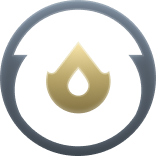
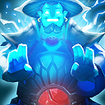

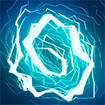

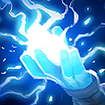

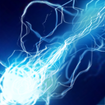


Quick Comment () View Comments
You need to log in before commenting.